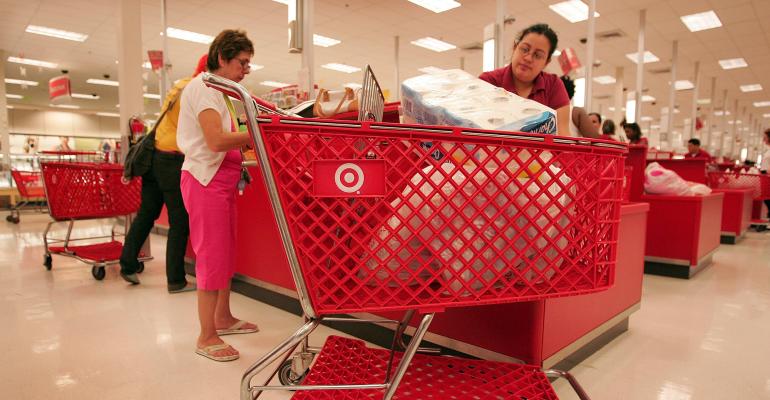(Bloomberg Opinion) -- It may seem odd to hear a national retailer in 2023 talk about stores being at the center of their business and not only at the center, but getting a $4 billion to $5 billion injection of spending. For Target, which is known for its unique ability to turn a quick toothpaste run into a $120 splurge on candles and a new throw blanket, stores are how it will survive the current bout of cautious spending.
In the midst of a broad pullback in nice-to-have purchasing, Target is smart to think ahead and revamp its original money makers. Of course the internet has dramatically upended how we shop, but as Chief Executive Officer Brian Cornell declared to investors Tuesday: “Stores are at the center of everything.”
For Target, that statement has become even more true since 2019. Sales productivity in stores has increased by 37%, with the average store going from a median level of about $40 million in annual sales to $55 million. Its highest performing stores though deliver more than $100 million — setting an almost natural target for the company to chase. Stores are also responsible for fulfilling the vast majority of online orders, and same-day deliveries, which now account for 10% of all sales.
As people return to in-person activities, Target is freshening things up. This year the company is opening more stores and investing in about 175 through full remodels, new shop-in-shop experiences like Ulta Beauty and new order fulfillment spaces. The goal is to squeeze as much profit as possible.
The investments are much needed. Target stores were designed to encourage impulse buying so that a one-item trip multiplies into a shopping spree. For instance, Target remodeled its spaces in 2018 with two entrances for specific purposes — ease and inspiration. A shopper coming in through one door might walk by shelves of small-ticket buys or a case of grab-and-go grocery items or online order pickup. Subtle details like curved shelves at the end of an aisle aim to catch the eye as shoppers browse other products. Clearance items toward the front of checkout encourage impulse buys.
But some Target stores have been languishing as a fun shopping destination, losing their ability to tempt. These days, its hard to walk into a store and not see a long check out line or inventory scattered on the floors or loose receipts blowing in the walkway out the door. Not to mention the prairie farm-style clothing that briefly filled the women’s department. It’s just not as fun or easy to aimlessly spend at Target.
Unfortunately for Target, sprucing up stores won’t solve all its problems. Consumers have a lot on their minds these days, raising the bar for what they’re willing to spend on. Grocery and food inflation is still high and the Federal Reserve is still mulling additional interest rate hikes to rein in demand. Consumer confidence unexpectedly declined in February, with a measure of expectations — which reflects consumers’ six-month outlook — falling to the the lowest since July.
Luckily, consumers are embracing in-store shopping again, and Target is seeing higher traffic than peers, including discount retailer Walmart Inc., according to location analytics firm Placer.ai. Comparable-store sales climbed 0.7% in the fourth-quarter, beating analyst expectations for a decline. While that’s a welcome surprise it’s still off the pre-pandemic pace of growth, a sign Target needs to up its store game. It’s a good thing that’s exactly where Cornell’s focus is.
More From Bloomberg Opinion:
- What Walmart Doesn't Know Should Worry Us All: Leticia Miranda
- Consumers Are Letting the Good Times Roll Again: John Authers
- Travel Prices Are Soaring. Travelers Don't Care: Andrea Felsted
Want more Bloomberg Opinion? OPIN <GO>. Or you can subscribe to our daily newsletter.
To contact the author of this story:
Leticia Miranda at [email protected]
© 2023 Bloomberg L.P.




